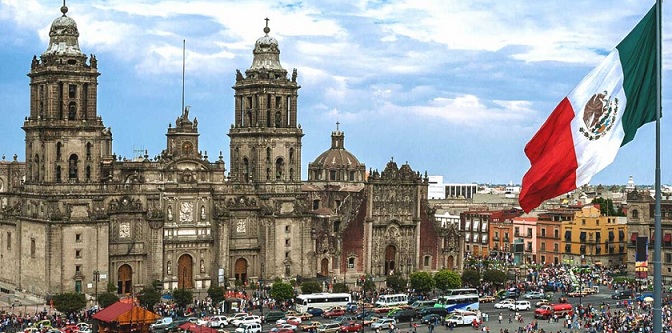
NEW YORK: Fitch Ratings is likely to revise up Mexican GDP growth forecasts (currently 5.3% for 2021 and 2.7% for 2022) after stronger-than-expected performance in 2Q21.
“The banking system’s improving profitability in 1H21 outpaced expectations as credit quality deterioration was less than expected, particularly at large banks that frontloaded provisions in 2020,” the rating agency noted.
GDP growth forecast: “A steady economic recovery and improving financial performance, particularly at Mexico’s largest banks, will support banking sector stability over the medium term,” Fitch Ratings noted.
However, the recent coronavirus-related partial closures and pandemic-related setbacks remain key risks.
Banks with higher exposure to more vulnerable sectors such as unsecured consumer or small and medium enterprise (SME) lending or with weaker credit profiles face greater risks, Fitch Ratings says.
Mexican banks’ Operating Environment (OE) trend continues to be negative. Mexico’s still-low full vaccination rate of about 27% and the government’s lower propensity to support the economy relative to LatAm peers make the economic recovery vulnerable to further waves and lockdowns.
Notably, some smaller banks saw higher losses and lower profitability in 1H21 as most of these entities did not provision in advance, unlike their larger counterparts.
Mexico’s economy will rebound partially in 2021 from the 8.3% decline of 2020, though the nominal level of GDP in USD will remain below pre-crisis levels until 2022. Although consumer confidence has improved, which should support credit growth if sustained, business confidence and Mexican GDP growth will also need to improve to support credit growth.
Fitch notes financial intermediation is very low in Mexico, with banks more focused on corporate and public-sector lending.
“Consumer lending is concentrated on the middle to higher-income segments, with lending to the weakest borrowers somewhat limited, which has been supportive of asset quality”.
“Non-bank financial institution (NBFI) lending has grown as a result, with around 1,300 NBFIs providing loans to underserved segments such as SMEs and low-income individuals”.
Banks acted prudently during 2020 with limited loan origination, which resulted in a slight decrease in the system’s loans. Because large banks built up prudential reserves in 2020, impairment charges declined in 2021, with some banks looking to release reserves this year, benefiting profitability.
Notwithstanding regulatory approval to distribute dividends, Fitch expects capital ratios to continue to improve due to the recently approved RWA (risk-weighted asset) reduction in consumer lending and TLAC adoption.
“Central bank policy rate hikes and a resumption of credit growth since the June midterm elections should support bank profitability in 2H21,” Fitch said.
Government programs to support individuals and SMEs since the pandemic have been limited, resulting in lower loan growth compared to regional peers. Loans continued to contract in 1H21 on a YoY basis with only a modest increase over the past six months.
Policy risks remain for Mexican banks; legislative initiatives to cap interest rates and fees introduced by the Morena party in the Senate will not be a priority under the current legislative agenda.
“If passed, however, these would negatively affect bank profitability, suppressing product offerings and the extension of credit”.